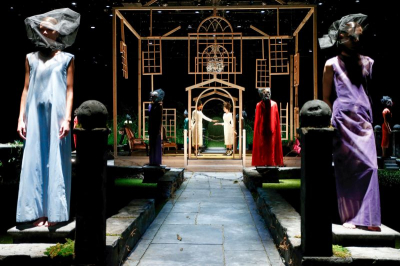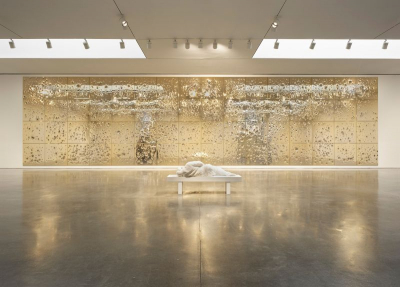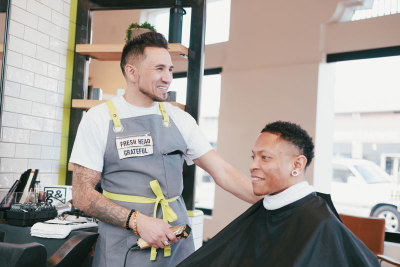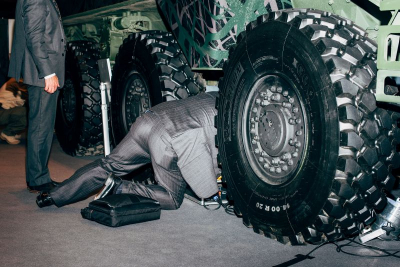Fashion Rebellion at 30,000 Feet: The Battle Against Airline Dress Code Discrimination
In a world where air travel intersects with fashion, tales of passengers denied boarding or singled out for their attire have become all too common. It's a scenario that has ensnared not only ordinary travelers but also celebrities and professionals from diverse walks of life.
Consider the case of Aurora Culpo, who took to social media to decry American Airlines when her sister, the renowned model Olivia Culpo, was forced to conceal her ensemble—a black sports bra and biking shorts—under a hoodie before embarking on a flight to Cabo San Lucas in 2022. Across the digital landscape, similar stories echo: Tisha Rowe, a respected medical practitioner, publicly rebuked Fort Worth-based carrier American Airlines after being asked to cloak her floral outfit during a 2019 flight from Jamaica to Miami.
However, perhaps none garnered as much attention as the incident involving Ray Lin Howard, alias Fat Trophy Wife, a self-professed hairstylist and rapper. Escorted off an Alaska Airlines flight in August 2021 due to her attire—a pair of black shorts and a crop top—Howard's subsequent TikTok video went viral, sparking widespread debate and drawing over 1.5 million likes.
Yet, the struggle for sartorial freedom reached new heights when Lisa Archbold engaged the renowned civil rights attorney Gloria Allred following a clash with Delta Air Lines in January 2024. Archbold, feeling unjustly targeted for not wearing a bra under her top, found herself escorted off the plane by a gate agent. Allred's subsequent press conference, titled "A Woman Passenger's Breast vs. Delta Air Lines," underscored the gravity of the issue, with bras hanging in the background as a poignant visual.
The clash between personal expression and airline regulations harks back to a bygone era. Before the Airline Deregulation Act of 1978 reshaped the industry landscape, passengers paid a premium for their tickets—and dressed accordingly, donning three-piece suits, elegant dresses, and polished heels.
As the debate rages on, passengers and advocates continue to challenge the subjective nature of airline dress codes, advocating for policies that promote inclusivity and respect individual rights. In the airspace where fashion meets freedom, the battle for acceptance and equality soars ever higher.
In-Flight Fashion Fumbles: Navigating the Gray Area of Airline Dress Codes
In today's air travel landscape, comfort reigns supreme. With shifting cultural norms and the rise of trends like athleisure, the economy cabins of modern-day flights are a melting pot of attire, from jeans and T-shirts to hoodies, flip-flops, and even pajamas. However, amidst this sea of casual wear, clashes between passengers and airline staff over fashion choices persist, fueled in part by the nebulous nature of airline policies.
When passengers purchase an airline ticket, they unwittingly sign up for more than just a journey; they also agree to adhere to the airline's contract of carriage—a legal document outlining various policies. Yet, many airlines lack explicit dress codes, instead burying vague prohibitions within the fine print. For instance, bare feet are universally frowned upon, while parameters around appearance vary. Delta, for instance, reserves the right to remove passengers whose attire or conduct poses an "unreasonable risk of offense or annoyance," while American Airlines mandates "appropriate" dress, prohibiting bare feet and offensive clothing.
Spirit Airlines takes a similarly strict stance, banning barefoot passengers and attire deemed "lewd, obscene, or offensive." Hawaiian Airlines, however, leads the pack in clarity, explicitly listing prohibited items like bikini bottoms and Speedos, alongside guidelines for upper body coverage. Yet, even with detailed policies, surprises can arise, especially for non-rev passengers flying on guest or buddy passes. In a notable incident in 2017, United Airlines drew backlash after banning two teenage girls from a flight due to their leggings—a decision the airline staunchly defended, sparking widespread criticism.
As passengers navigate this murky terrain of dress codes and unwritten rules, the clash between personal expression and airline regulations continues to unfold, underscoring the need for clearer guidelines and greater transparency in the skies.
In-Flight Fashion Frustration: Navigating the Grey Areas of Airline Dress Codes
One of the most perplexing aspects of airline dress code policies is their inherent ambiguity, leaving terms like "appropriately," "lewd," and "offensive" open to interpretation and giving airline staff considerable latitude in enforcement. Nick Leighton, an etiquette expert based in Manhattan and co-founder of the podcast "Were You Raised by Wolves?", highlights the diverse cultural standards across the geographic areas airlines serve. "Airlines get to decide their policies, but what cultural standard is it?" Leighton questions. "Is it going to be the Delta headquarters in Atlanta, which is going to be different from, you know, Provence or Los Angeles?
These disparities, coupled with the vast array of cultural backgrounds among both airline employees and passengers, can lead to certain individuals being unfairly targeted. Women, in particular, find themselves at the forefront of many highly publicized incidents. Mary Jo Manzanares, a travel writer from Seattle who served as a flight attendant for a US carrier for 33 years, acknowledges the prevalence of body shaming in many of these incidents. "It's got to do with skimpy attire, and that's generally focused on women," she observes. "But there's no doubt about it—it's a gender-focused fashion issue. I wish that it wasn't.
In her correspondence with Delta's president, Gloria Allred underscored this gender bias, referencing the airline's contract of carriage which prohibits discrimination based on sex. By denying Lisa Archbold the right to travel in a T-shirt deemed appropriate for a man, Delta's actions constituted discrimination based on sex.
While Manzanares considers herself fortunate to have encountered only a "small handful" of attire-related incidents during her career, she emphasizes the importance of passengers being aware of the potential for in-flight trouble stemming from seemingly innocuous clothing choices. To mitigate such issues, ground staff and flight attendants strive to address any concerns well before departure, ensuring a smoother journey for all involved.
Ground Control: Managing In-Flight Fashion Dilemmas
Ensuring a peaceful journey begins long before the wheels leave the tarmac, according to Mary Jo Manzanares. "You've got to make your priority resolving things on the ground, making sure that there is no aggression," she emphasizes. "When you go to 30,000 feet, you may passenger conversation or banter or inappropriate comments between passengers, add in a little alcohol, and you may be making an unscheduled landing. And no one wants that.
Inquiries into airline dress policies revealed a surprising lack of response from the industry. Despite efforts by CNN Travel to engage nearly a dozen major US and international carriers, only two provided feedback. KLM and Air France declined to comment, while Southwest revealed via email that they do not enforce an official dress code. Instead, Southwest relies on its employees to exercise judgment, prioritizing passenger comfort and safety within the framework of their Contract of Carriage.
Regarding personal appearance and hygiene, the Contract of Carriage addresses only barefoot passengers and individuals with an "offensive odor." However, the responsibility of monitoring attire—and requesting adjustments if necessary—falls largely on flight attendants, a task Mary Jo Manzanares acknowledges as less than desirable. "The last thing we want to do is get turned into being the fashion police," she laments.
Nevertheless, recent incidents underscore the potential impact of passengers pushing sartorial boundaries. Disruptions caused by attire choices not only inconvenience fellow passengers but may also lead to flight delays. Addressing such issues preemptively demands coordination among airline staff, with the captain ultimately wielding the authority to deny boarding if necessary, as outlined by aviation resource Simple Flying.
For passengers aggrieved by treatment, avenues for recourse exist in the form of complaints to the airline or the Department of Transportation. However, outcomes vary, with compensation and refunds typically adjudicated on a case-by-case basis, offering no guarantees of resolution. As airlines grapple with the complexities of in-flight fashion dilemmas, the journey toward a harmonious sky continues.
Navigating the Costs of In-Flight Fashion Faux Pas
When attire becomes the barrier to boarding, passengers may find themselves not only disappointed but also out of pocket for their unused tickets. An incident posted on X on April 1 detailed the plight of an American Airlines first-class passenger, allegedly denied boarding due to an outfit deemed offensive. Despite the $2,000 ticket price, the outcome remains shrouded in mystery, with neither the carrier nor the passenger offering comment.
Compounding the financial sting, travelers should be aware that travel insurance is unlikely to cover expenses arising from attire-related denial of boarding. Jeff Rolander, vice president of claims at Faye Travel Insurance, affirms this, drawing on over 20 years of industry experience to underscore the absence of coverage for such incidents.
Nick Leighton, the etiquette expert, suggests a preemptive approach to avoid wardrobe woes, emphasizing the importance of respecting personal space akin to etiquette in crowded environments like elevators or subways. "Maintaining yourself in your little bubble and not interfering into the bubble of anybody else," he advises.
Leighton advocates for a similar mindset during meal service, rejecting the notion of waiting for one's row to be served. Instead, passengers should embrace a solitary dining experience, distancing themselves from fellow travelers. When confronted with challenging attire choices, especially in the presence of children, Leighton proposes transforming discomfort into a "teachable moment," offering insights into appropriate behavior.
Kristy Alpert, a seasoned travel writer, echoes this sentiment, urging passengers to embrace a mindset shift when selecting in-flight attire, particularly those accustomed to Western cultural norms. By adopting a more considerate approach, travelers can navigate the skies with greater ease, minimizing the risk of attire-related turbulence along the way.
Dressing for Safety: Finding Balance in In-Flight Attire
For Kristy Alpert, the decision to dress conservatively during air travel isn't about sacrificing personal style—it's about extending a courtesy to fellow passengers. "It's not me relinquishing my freedom to dress how I want to dress—it's me showing others a kindness," she asserts, drawing from her experiences as the daughter of a retired Delta pilot. By eschewing provocative clothing or offensive logos, Alpert sees herself not as relinquishing rights, but as embodying the ethos of a global citizen.
Nick Leighton echoes this sentiment, emphasizing the importance of considering personal safety when selecting in-flight attire. For him, the key lies in envisioning how one's clothing and footwear would fare in an emergency scenario. "I want to make sure that if I have to leave this plane in 90 seconds, I'm dressed appropriately," he affirms. Leighton opts for natural fibers, long pants and sleeves, and closed-toe shoes, mindful of the challenges posed by tight skirts or open-toed sandals in evacuation or tarmac situations. In his view, the focus should shift towards dressing for safety above all else.
As travelers navigate the complexities of in-flight fashion, striking a balance between personal expression and consideration for others emerges as a guiding principle. Whether it's dressing to facilitate a swift exit in an emergency or choosing attire that fosters harmony among fellow passengers, the journey towards safer skies begins with conscious wardrobe choices.
In the realm of air travel, the choice of attire extends far beyond personal fashion preferences—it becomes a statement of consideration, safety, and global citizenship. As passengers navigate the skies, they must balance the desire for self-expression with the need to foster harmony and respect among fellow travelers. By embracing a mindset of kindness and prioritizing personal safety in wardrobe decisions, travelers can contribute to a smoother, more respectful journey for all. In this evolving landscape of in-flight fashion, the path to safer skies is paved with thoughtful choices and a shared commitment to mutual respect and understanding.








![Unmatched Excellence: 30 Years, Zero Lost Bags - The Remarkable Record of [Airport's Name]](/media/k2/items/cache/11d1150d71d7fad2b9b66fe40cd35dcb_M.jpg)



